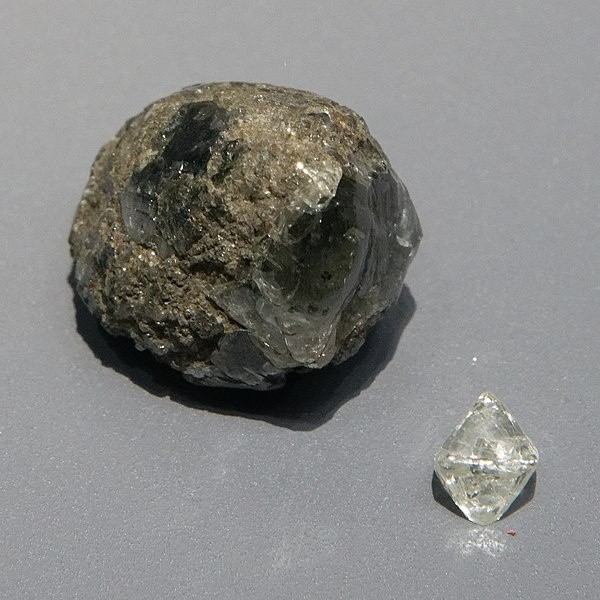Lonsdaleite, also called as the "Hexagonal Diamond," likely originated within a long dead planet located light years away from Earth.
According to a new study, scientists claimed to have figured out why the ultra-hard space diamond was found inside a rare type of meteorite several decades ago.
If confirmed, the scientific community can piece the puzzle together on the origins of the extraterrestrial diamond.
The new research supports the notion that the very rare diamond originated from a long obliterated dwarf planet, where its remnants called ureilites meteorites have made its way to our solar system.
However, the novel finding of the scientific team is not about the interplanetary origins of the lonsdaleite but rather the alleged natural process of its creation inside the meteorite environment.
If proven, the study's team is hoping to further understand the geochemical mechanism of the formation process.
The natural phenomenon is reportedly compared to a supercritical chemical vapor deposition (CVD) process occurring in space rocks.
If proven, the researchers are expecting to replicate the process so it can be used in various industries, to make ultra-hard machine parts and rare engagement ring.
The bizarre material was first identified inside the Canyon Diablo iron meteorite, wherein its crater was found in Arizona, United States, back in 1967.
The site of discovery is also known as the famous Barringer Crater.
Scientists classify lonsdale as an individual mineral species, which has long been linked to the ordinary diamond, but is "theoretically" far more superior than our Earthly mineral made of carbon
Lonsdaleite Space Diamond

The findings about the lonsdaleite space diamond were published in the journal PNAS on Monday, September 12.
The team led by researchers from Australia reported lonsdaleite is a product of diamond formation inside ureilite meteorites, which plausibly came from the mantle of a destroyed inner solar system dwarf planet.
The meteorites contain graphite crystals that were "pseudomorphed" by lonsdaleite, through a mild chemical reaction between graphite and supercritical C-H-O-S fluids.
Following the discovery, the researchers are looking at the possibility of it being manufactured and be used for industrial application.
Also Read: Diamonds, an Astronaut's Best Friend?
Dead Planet Origins
According to microscopist Dougal McCulloch, a staff at RMIT University in Australia, there is strong evidence that CVD in space resemble the same process that people used in a lab to make diamonds, as cited by Science Alert.
McCulloch added that the space rocks where the celestial diamond came from probably come from the dwarf planet shortly after a catastrophic collision with an unidentified celestial body.
What is the Lonsdaleite Diamond?
Various studies supported the growing evidence that the extraterrestrial origins of lonsdaleite makes it possess excellent static mechanical properties, where its strength is similar to Earthly diamond.
Other research also suggested that the space diamond is stiffer than the normal diamond, as cited by ResearchGate.net.
For years, lonsdaleite has been candidate to be Earth's hardest material.
Mineralogical simulation shows in a statistical probability that the space mineral is harder than the diamond, which has long thought to be the hardest mineral on the planet.
Related Article: Astronomers Identify Earth-Size 'Diamond' in Space
© 2025 NatureWorldNews.com All rights reserved. Do not reproduce without permission.





